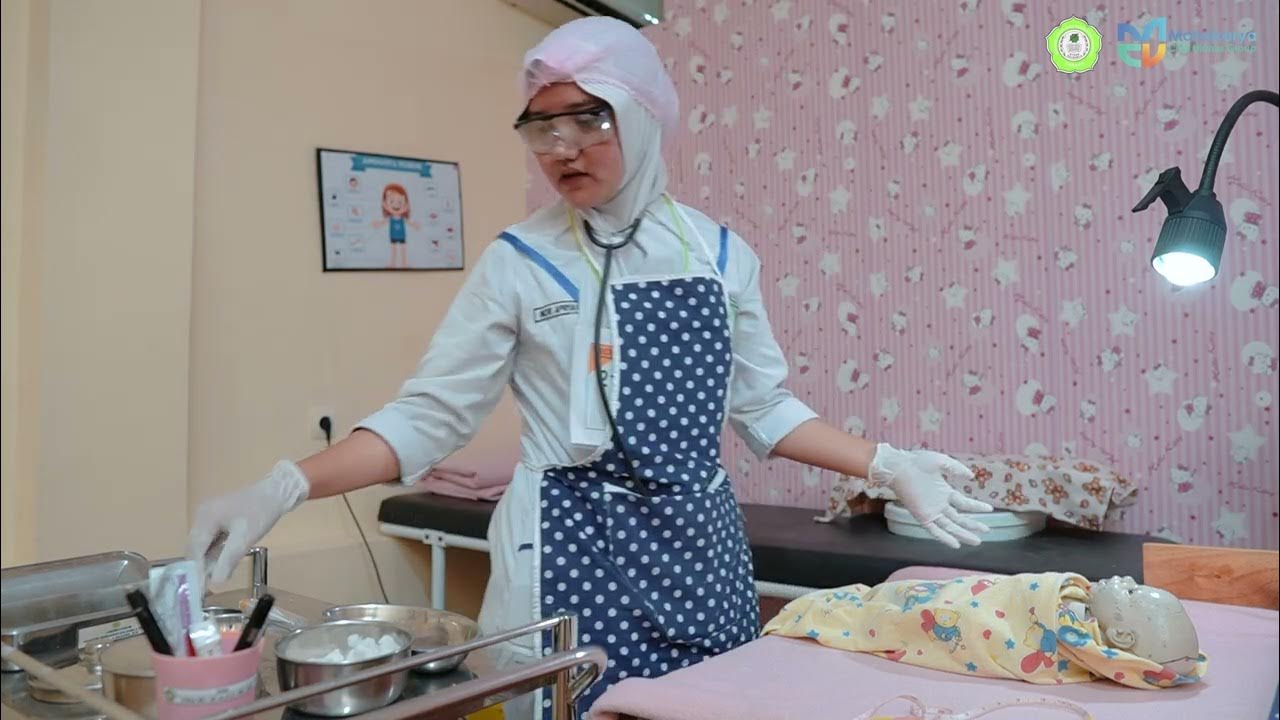PEMERIKSAAN FISIK HEAD TO TOE (DASAR)
Summary
TLDRThis video script details a thorough head-to-toe physical examination process conducted by a medical professional. It covers essential steps such as inspecting the head, eyes, ears, nose, mouth, and neck, followed by assessments of the chest, abdomen, and extremities. Tools like speculums, penlights, and reflex hammers are used throughout the examination. The medical professional ensures no signs of abnormalities or health issues, concluding the session with positive health results. The video serves as a guide for performing a comprehensive physical checkup, aiming to ensure the well-being of the patient.
Takeaways
- 😀 The script focuses on a physical head-to-toe examination of a patient, which is performed from head to toe, ensuring a thorough check of the body.
- 😀 Essential tools for a physical exam include a speculum, otoscope, penlight, Ishihara book for vision tests, and disinfectant for hygiene.
- 😀 The exam begins with checking the head for symmetry and any scalp issues, followed by a general inspection of the face and mouth.
- 😀 The eyes are examined for sharpness and any signs of color blindness using the Ishihara book, with normal results indicated by clear vision.
- 😀 The nose is checked for any discomfort, cleanliness, and functionality, confirming no issues.
- 😀 The mouth is inspected for cleanliness, and although the teeth might be slightly misaligned, no major concerns are noted.
- 😀 The ears are checked for cleanliness, with a slight amount of earwax, but no pain or issues in hearing.
- 😀 The neck is examined for any swelling or pain in the thyroid and lymph nodes, and the patient is asked to swallow to assess the thyroid's movement.
- 😀 The chest and abdomen are palpated, with the patient instructed to breathe normally while the examiner checks for normal respiratory movements and any abdominal issues.
- 😀 The extremities (arms and legs) are tested for strength and reflexes, ensuring normal function without pain, and the patient is asked to raise their arms and legs to test muscle response.
Q & A
What is the purpose of the physical examination described in the transcript?
-The purpose of the physical examination is to conduct a thorough head-to-toe check of the patient's overall health, assessing various body parts and functions, from the head to the extremities.
What tools are mentioned as necessary for the physical examination?
-The tools mentioned include a stethoscope, otoscope (for ear and nose checks), penlight, Ishihara chart (for visual acuity and color blindness), hand sanitizer, gloves, and other basic medical instruments for inspection and assessment.
What is the role of the Ishihara chart in the examination?
-The Ishihara chart is used to test the patient's visual acuity and check for color blindness during the examination of the eyes.
How does the examination assess the patient's head?
-The head is assessed for symmetry and tenderness. The examiner gently presses on the scalp to check for pain or abnormalities.
What is being checked during the eye examination?
-During the eye examination, the examiner checks visual acuity, color vision, and ensures there are no signs of anemia or jaundice in the eyes.
What is the significance of the Babinski reflex test in this examination?
-The Babinski reflex test is used to assess the neurological function of the patient. A normal response indicates healthy neurological function, while an abnormal response may indicate a problem.
What does the examiner check for in the patient's mouth?
-The examiner checks for cleanliness of the mouth and looks for dental issues, though they note that the patient's teeth may not be perfectly aligned.
How is the patient's abdomen examined?
-The abdomen is gently pressed to check for any tenderness or irregularities. The examiner also listens to abdominal sounds to ensure normal function.
What checks are done on the patient's extremities?
-The patient's extremities are checked by testing their strength and reflexes, including checking the movement and response to stimuli in the arms and legs.
What is the final assessment of the patient's health in this examination?
-The final assessment confirms that the patient has no significant health issues and is in good health. No abnormalities are found in the examination process.
Outlines

This section is available to paid users only. Please upgrade to access this part.
Upgrade NowMindmap

This section is available to paid users only. Please upgrade to access this part.
Upgrade NowKeywords

This section is available to paid users only. Please upgrade to access this part.
Upgrade NowHighlights

This section is available to paid users only. Please upgrade to access this part.
Upgrade NowTranscripts

This section is available to paid users only. Please upgrade to access this part.
Upgrade NowBrowse More Related Video
5.0 / 5 (0 votes)





